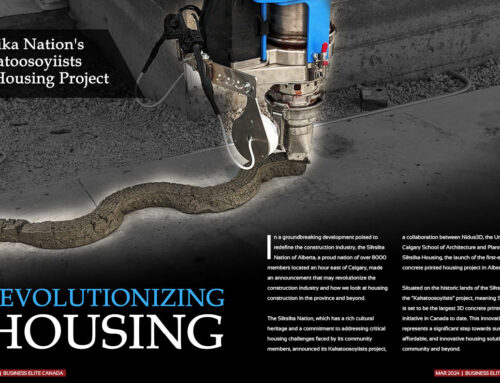The Neeginan Centre, located in Winnipeg, Manitoba, serves as a significant cultural and community hub, promoting the social, educational, and entrepreneurial growth of Indigenous individuals and organizations. The name Neeginan, which means ‘Our Place’ in Cree, represents the long-standing need for Indigenous people to have a place of their own—the idea of such a place was mentioned as far back as 1969 by the Indian and Metis Friendship Centre and reiterated in 1972 by the Manitoba Metis Federation. A feasibility report by Neeginan (Manitoba) Incorporated in 1975 further solidified this vision. Today, the Centre offers a wide range of services, including employment assistance, a health and wellness clinic, education and training programs, a daycare, and even a restaurant and art gallery.
The initial vision behind the creation of the Aboriginal Centre of Winnipeg was to address the pressing needs of the Indigenous population in the Higgins and Main area. “In the early 60s, various studies and plans highlighted the need for Indigenous social, economic, educational, and cultural activity,” notes Marileen Bartlett, B.A, B.Ed., M.Ed., O.M., Executive Director of the Neeginan Centre. However, it wasn’t until 1992 that a group of Indigenous visionaries purchased and refurbished the old CPR Station. From this group, the first Board of Directors was established, Wayne Helgason and Bill Shead are still involved and hold the original vision – “We envisioned a center that promotes the growth of Indigenous individuals and organizations, allowing them to support each other and create capacity within the community.”
Over the years, this vision has evolved to meet new challenges, such as dealing with the impact of COVID-19 and addressing issues like addictions and homelessness. “Our vision remains the same, but the challenges have changed,” Bartlett says. “Leasing from Neeginan Centre allows tenants to focus on providing services without worrying about building operations.”
The Neeginan Centre has played a crucial role in revitalizing relationships between Indigenous and non-Indigenous communities in Winnipeg. “Our relationships with the non-Indigenous community are in line with reconciliation,” Bartlett explains. “We aim to develop relationships that benefit both communities and plan to start heritage tours again once renovations are complete.”
The Centre itself is now the former Canadian Pacific Railway (CPR) station, which adds another layer of meaning to its existence. “CPR played a significant role in developing Canada and displacing Indigenous people,” says Bartlett. “Transforming the CPR station into a place of new beginnings for Indigenous people is deeply symbolic.”
One of the major tenants at Neeginan Centre is the Centre for Aboriginal Human Resource Development (CAHRD), which uses 65 per cent of the leasable space. “CAHRD serves over 1,500 clients annually, offering education, training, and employment services,” Bartlett says. Other significant tenants include the Aboriginal Health & Wellness Centre Inc. (AHWC), which provides a blend of contemporary and traditional health services, and the Aboriginal Council of Winnipeg (ACW), a political and advocacy organization that represents the urban Indigenous community.
Educational and training programs provided through CAHRD at the Neeginan Centre, are comprehensive and cater to various needs. “We assist Indigenous adults in obtaining education up to grade 9 through Neeginan Learning and Literacy,” says Bartlett. “Then they can attend the Aboriginal Community Campus for grades 10-12 and earn an adult grade 12 diploma.” Neeginan College of Applied Technology offers specialized training programs in areas like building operations, community service, early childhood education, gas turbine technology, heavy equipment operation, industrial welding, machinist, TIG welding, and social innovation. The economic and social impact of the Neeginan Centre on the local community and the broader Winnipeg area has been substantial. “Our success has encouraged other developments in the area,” says Bartlett. This includes the Thunder Bird House, Manitoba Metis Federation, United Way, Health ACCESS Centre, and CAHRD student housing complexes.
The Aboriginal Health and Wellness Centre Inc. (AHWC) integrates traditional and Western resources to support the community’s health and wellness needs. “They combine contemporary medical practices with Indigenous culture, including the presence of elders,” says Bartlett.
To be eligible for Green and Inclusive Community Buildings (GICB) funding, Neeginan Centre plans to undertake several upgrades to reduce energy usage and greenhouse gas emissions. “Our objectives include reducing energy consumption, improving safety and performance, creating a healthier environment, and increasing accessibility,” says Bartlett. Planned activities include roof replacement and insulation, window upgrades, LED fixture installations, and HVAC system upgrades, to name a few.
The Neeginan Centre resolves to continue being a symbol of hope for Indigenous people in Winnipeg. “Our goal is to promote the social, educational, and entrepreneurial growth of Indigenous individuals and organizations,” says Bartlett. “We look forward to doing this in a building that is in good repair, has improved performance, reduces energy usage, lowers our carbon footprint, and creates a healthier learning and work environment.”
For more information, please visit www.neeginancentre.com






